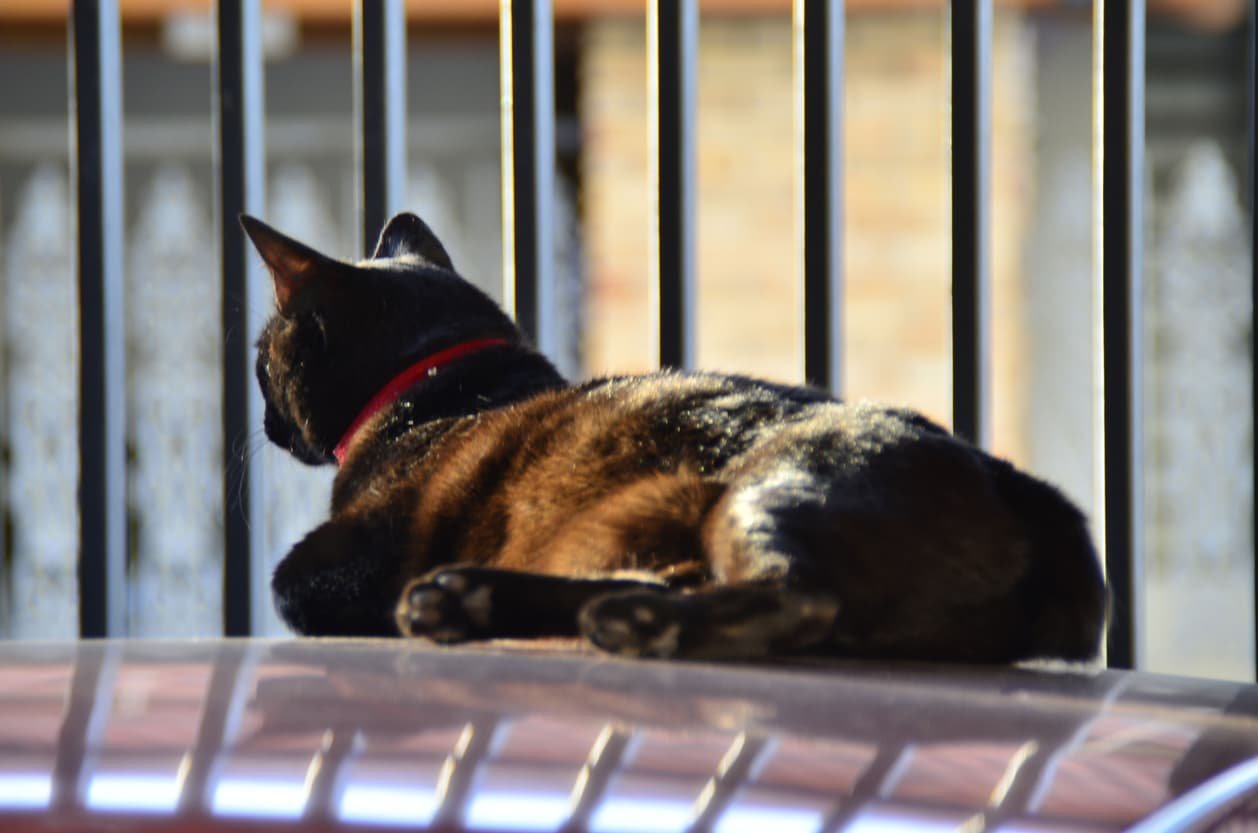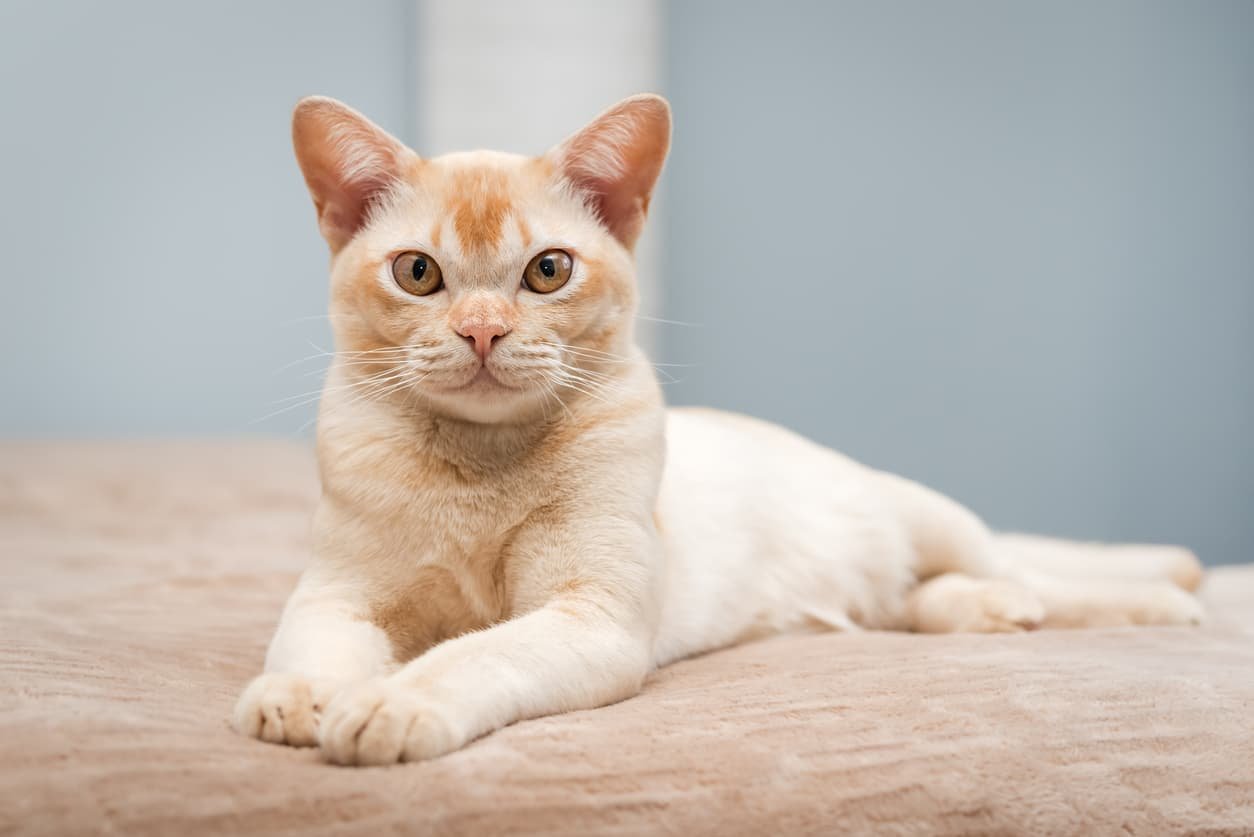The Exotic Shorthair is a delightful and affectionate feline companion known for its charming personality and unique appearance. Often called the “lazy man’s Persian,” the Exotic Shorthair has the same round face, short nose, and plush coat as the Persian cat, but with significantly lower grooming needs. This cat breed has gained popularity among human companions who love the look of a Persian but prefer a shorter coat that requires less maintenance.
This guide provides comprehensive information on the Exotic Shorthair’s personality, care requirements, potential health issues, and everything else you need to know before bringing one of these feline friends into your home.
Table of Contents
ToggleExotic Shorthair Cat Breed Information Table
| Feature | Description |
|---|---|
| Breed Origin | Developed in the 1950s in the U.S. by crossing Persian cats with American Shorthairs |
| Size | Medium-sized, stocky, and well-muscled |
| Weight | Males: 10-14 lbs, Females: 7-12 lbs |
| Lifespan | 12-15 years, with some living beyond 15 years with proper care |
| Coat Type | Short, dense, and plush with a soft, thick undercoat |
| Coat Colors | Wide range, including white, black, blue, red, cream, silver, and tortoiseshell patterns |
| Eye Color | Copper, blue, green, or odd-eyed, depending on coat color |
| Temperament | Affectionate, gentle, playful, and social; enjoys human companionship |
| Grooming Needs | Low maintenance; weekly brushing recommended to manage shedding |
| Activity Level | Moderate; enjoys interactive play but also loves lounging |
| Health Concerns | Prone to polycystic kidney disease (PKD), brachycephalic syndrome, and eye-related issues |
| Best For | Families, singles, seniors, and those looking for a low-maintenance but affectionate companion |
The Origin and History of Exotic Shorthair Cats
The Exotic Shorthair’s history dates back to the 1950s in the United States, where breeders sought to create a new breed that retained the Persian’s distinctive appearance but with a shorter, low-maintenance coat. The primary goal was to produce a cat with the Persian’s round face, flat nose, and large expressive eyes while minimizing the extensive grooming required for long-haired breeds.
To achieve this, breeders initially crossed Persian cats with American Shorthairs. These crossbreeds inherited the Persian’s signature features but had the short, dense coat of an American Shorthair. Over time, other breeds, including the Burmese and British Shorthair, were introduced to refine the coat texture and maintain the stocky body type.
Official Recognition and Naming
By the early 1960s, the efforts to establish this new breed gained traction. Breeders petitioned for recognition of their distinct short-haired Persian-like cats, and in 1967, the Cat Fanciers’ Association (CFA) officially recognized the breed under the name Exotic Shorthair. The name reflected the breed’s exotic Persian lineage while differentiating it from other shorthair breeds like the American Shorthair and British Shorthair.
During the same period, European cat registries also began to recognize the breed, further expanding its popularity. The International Cat Association (TICA) and the Fédération Internationale Féline (FIFe) later acknowledged the Exotic Shorthair, solidifying its status as a distinct breed.
Refinement of the Breed
Once officially recognized, breeders worked diligently to perfect the Exotic Shorthair’s physical characteristics. They continued selective breeding, using Persian cats to ensure that the breed maintained its characteristic flat face, short nose, and round head. This selective breeding process gradually led to the Exotic Shorthair becoming almost identical to the Persian—except for the shorter coat.
By the 1980s, the Exotic Shorthair had fully established itself as a breed with a plush, dense coat, a solid, muscular build, and a gentle, affectionate personality. The breed was no longer seen as a mere variation of the Persian but rather as a unique feline companion in its own right.
Physical Characteristics of the Exotic Shorthair
1. Face and Nose
One of the most notable features of the Exotic Shorthair is its flat face and short nose. This gives them their adorable and expressive look. However, their short noses can sometimes lead to breathing difficulties, making it important to monitor their health closely. Their skin folds around the nose and mouth also require regular cleaning to prevent infections.
2. Plush Coat and Colors
The Exotic Shorthair has a luxurious plush coat that comes in various shades, including lighter shades like cream, silver, and white, as well as darker tones like black and chocolate. Their dense coat is soft to the touch and requires weekly brushing to prevent matting and remove loose hairs. The coat patterns may also feature vertical lines, adding to their unique aesthetic.
3. Body Structure
These cats have a sturdy, muscular body with a broad chest, short legs, and a thick tail. Their hind legs are slightly shorter than their front legs, giving them a unique and compact posture.
Exotic Shorthair Kittens and Their Needs
Exotic Shorthair kittens are playful, affectionate, and full of energy. They require a nurturing environment with plenty of stimulation, such as interactive toys and scratching posts, to keep them engaged. Early socialization is key to ensuring that these kittens grow into well-adjusted adults. When selecting an Exotic Shorthair kitten, look for one that is active, curious, and has bright eyes with a soft, plush coat. Since they have inherited the Persian cat’s laid-back nature, they also enjoy cozy spaces where they can relax and feel safe.
Exotic Shorthair Personality and Behavior
The Exotic Shorthair is known for being affectionate, playful, and highly adaptable. They form strong bonds with their human companions and love being part of family activities. Unlike some other cat breeds, they are not overly vocal but will communicate through soft chirps and purrs.
1. Individual Preferences
Each Shorthair has individual preferences when it comes to playtime and affection. Some enjoy interactive toys, while others prefer lounging on the couch with their owners.
2. Compatibility with Other Pets
Exotic Shorthairs are sociable and get along well with other cats, dogs, and even children. Their gentle and laid-back nature makes them an excellent choice for families. They also bond well with other exotic kittens and persian kittens, making multi-cat households a great environment for them.
3. Playfulness
Despite their calm demeanor, they enjoy playing with toys, climbing, and exploring their environment. They are intelligent and can be trained to perform simple tricks.
The Comfort of a Cat Tunnel Bed
A cat tunnel bed is an excellent investment for a Shorthair as it provides a perfect blend of comfort and entertainment. These beds offer a secure space where they can hide, sleep, or play, catering to their natural instincts. Since Exotic Shorthairs love cozy environments, a cat tunnel bed can help them feel safe and relaxed while also stimulating their playful side. It’s a great addition to any home that wants to keep their feline friend entertained and comfortable.
Health and Common Issues in Exotic Shorthair Cats
While the Exotic Shorthair is generally a healthy breed, they are prone to certain health issues, many of which are inherited from their Persian cat ancestry.
1. Polycystic Kidney Disease (PKD)
This is a genetic disorder common in Persian cats and their relatives, including the Shorthair. It leads to cyst formation in the kidneys, which can cause kidney failure over time.
2. Brachycephalic Syndrome
Due to their flat face and short noses, Exotic Shorthairs can experience breathing problems, especially in hot or humid conditions.
3. Eye Issues
Tear duct overflow is another concern due to their round face, which can cause excessive tearing and staining around the eyes.
Conclusion
The Exotic Shorthair is a wonderful choice for anyone looking for a loving, low-maintenance cat with a distinctive appearance. With proper care, regular grooming, and attention to health issues, they can live long, happy lives. Whether you are considering adopting an Exotic Shorthair kitten or learning more about this cat breed, these affectionate felines make excellent feline friends for any household.
If you’re looking for a cat that combines the best traits of the Persian cat and American Shorthairs, the Exotic Shorthair is the perfect match! Keep these tips for Exotic Shorthairs in mind to ensure they live a long and happy life.
FAQ
Are Exotic Shorthair cats friendly?
Yes, Exotic Shorthair cats are known for their affectionate and friendly nature. They are social, enjoy spending time with their human companions, and get along well with other pets. Their calm temperament makes them excellent companions for families, individuals, and even seniors looking for a low-maintenance but loving pet.
Are Exotic Shorthair cats rare?
Exotic Shorthair cats are not considered extremely rare, but they are less common than some other popular breeds. Their unique appearance and connection to Persian cats make them highly sought after, and reputable breeders take careful steps to maintain breed standards. Due to selective breeding, finding a well-bred Exotic Shorthair from a responsible breeder may take some time.
Do Exotic Shorthair cats have health problems?
Like all breeds, Exotic Shorthairs can have certain health concerns. The most common issues include polycystic kidney disease (PKD), brachycephalic syndrome, and eye-related problems due to their flat faces. Regular vet checkups, a healthy diet, and responsible breeding practices help minimize the risk of these health conditions.
Can Exotic Shorthair cats be left alone?
Exotic Shorthairs are affectionate cats that enjoy the company of their owners. While they can tolerate being alone for short periods, they thrive best in environments where they receive regular attention. If left alone frequently, they may become lonely or develop separation anxiety. Providing interactive toys, cozy resting spaces, and occasional companionship can help keep them content.
Are Exotic Shorthairs high-maintenance?
No, Exotic Shorthair grooming needs are low compared to long-haired breeds. Their short, plush coat needs brushing 1–2 times a week to prevent shedding and matting. Regular eye cleaning is also recommended due to their flat face
Why do Exotic Shorthairs have breathing problems?
Exotic Shorthair breathing issues are often due to their brachycephalic (flat-faced) structure, which can narrow airways and cause snoring, noisy breathing, or difficulty in heat. Regular vet care helps monitor and manage these conditions.
Do Exotic Shorthairs get along with dogs?
Yes, Exotic Shorthair dog compatibility is generally high. They’re calm, gentle, and adaptable—making them great companions for friendly, low-energy dogs when properly introduced.
How to clean Exotic Shorthair eye stains?
To clean Exotic Shorthair tear stains, gently wipe the area daily with a damp, soft cloth or pet-safe eye wipes. Their flat faces make them prone to staining, so regular cleaning helps prevent buildup and irritation.
Are Exotic Shorthairs good for first-time owners?
Yes, Exotic Shorthairs are among the best cats for beginners. They’re affectionate, calm, low-maintenance, and adapt well to various lifestyles—making them ideal for first-time cat owners seeking an easygoing companion.








